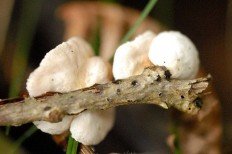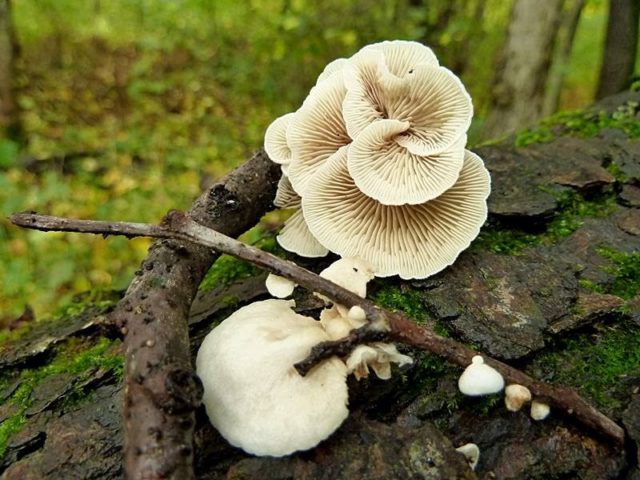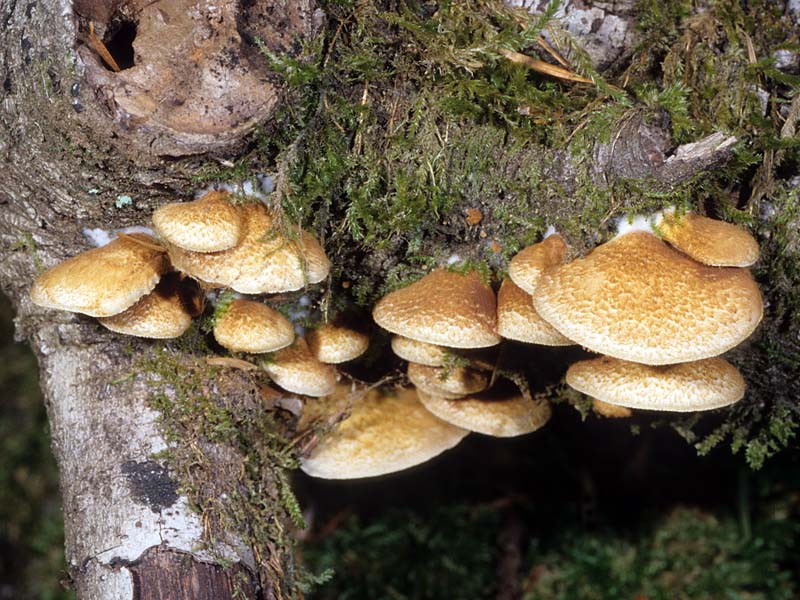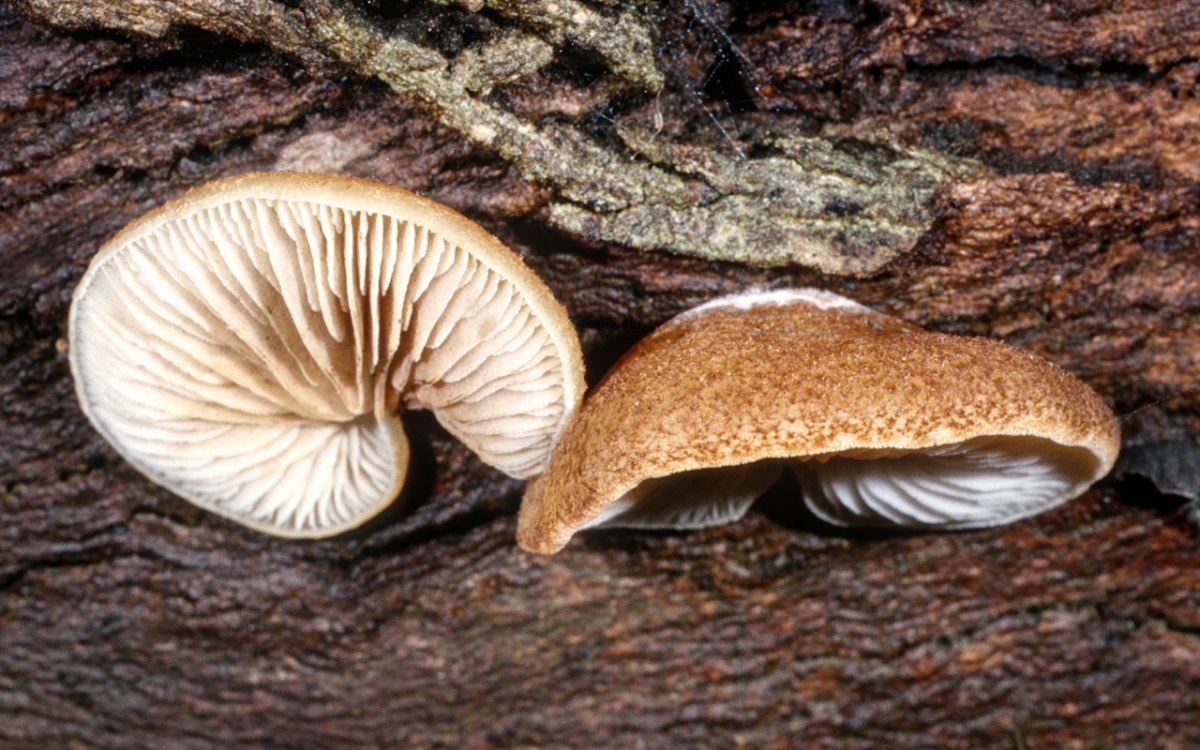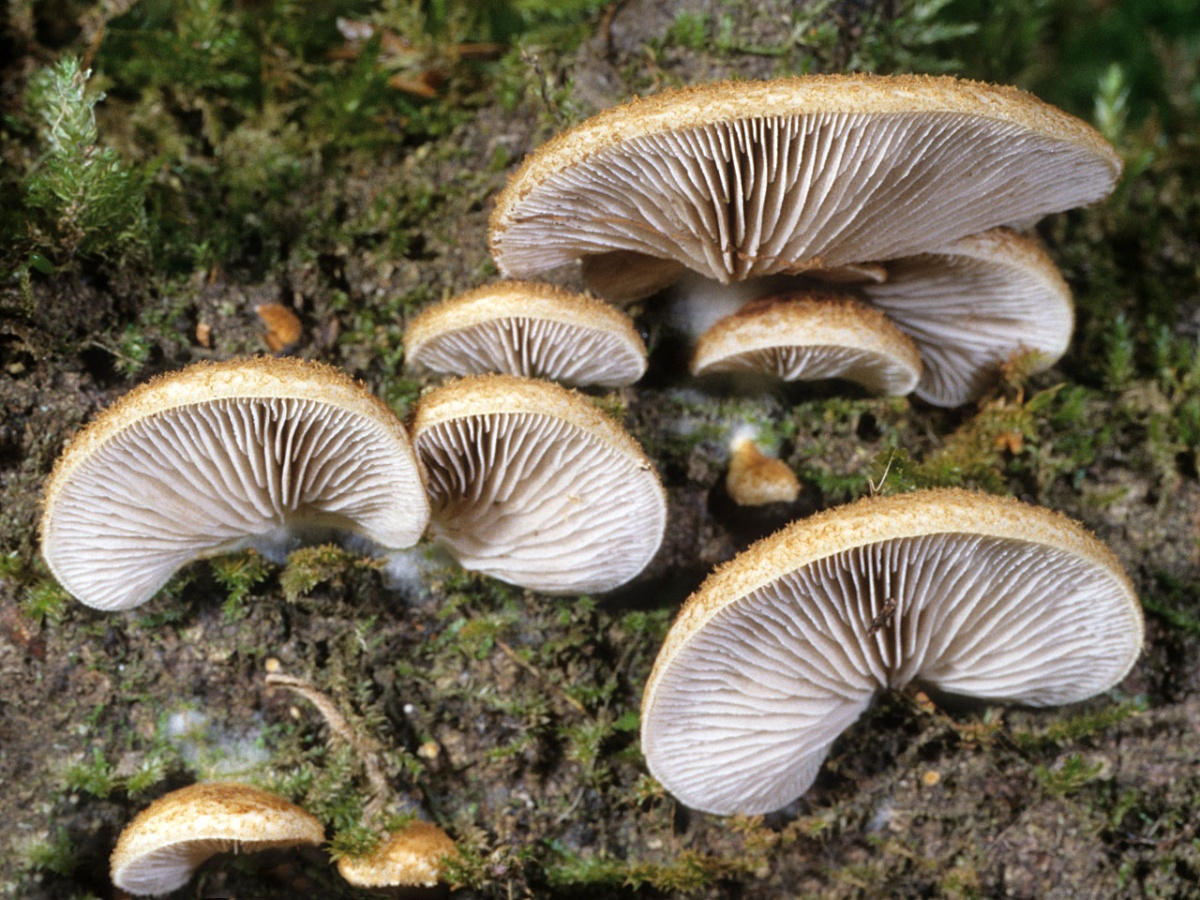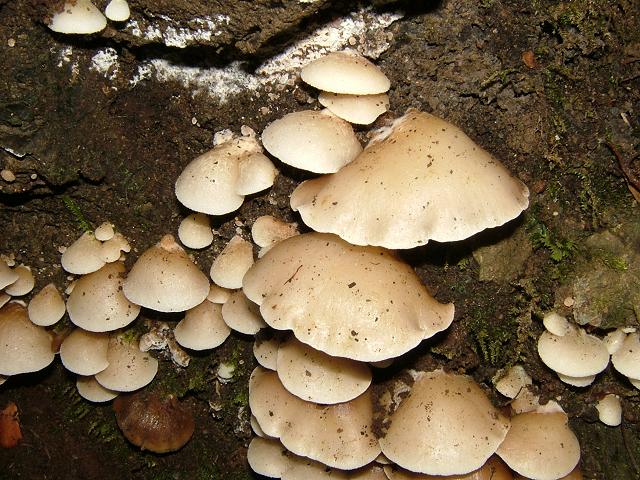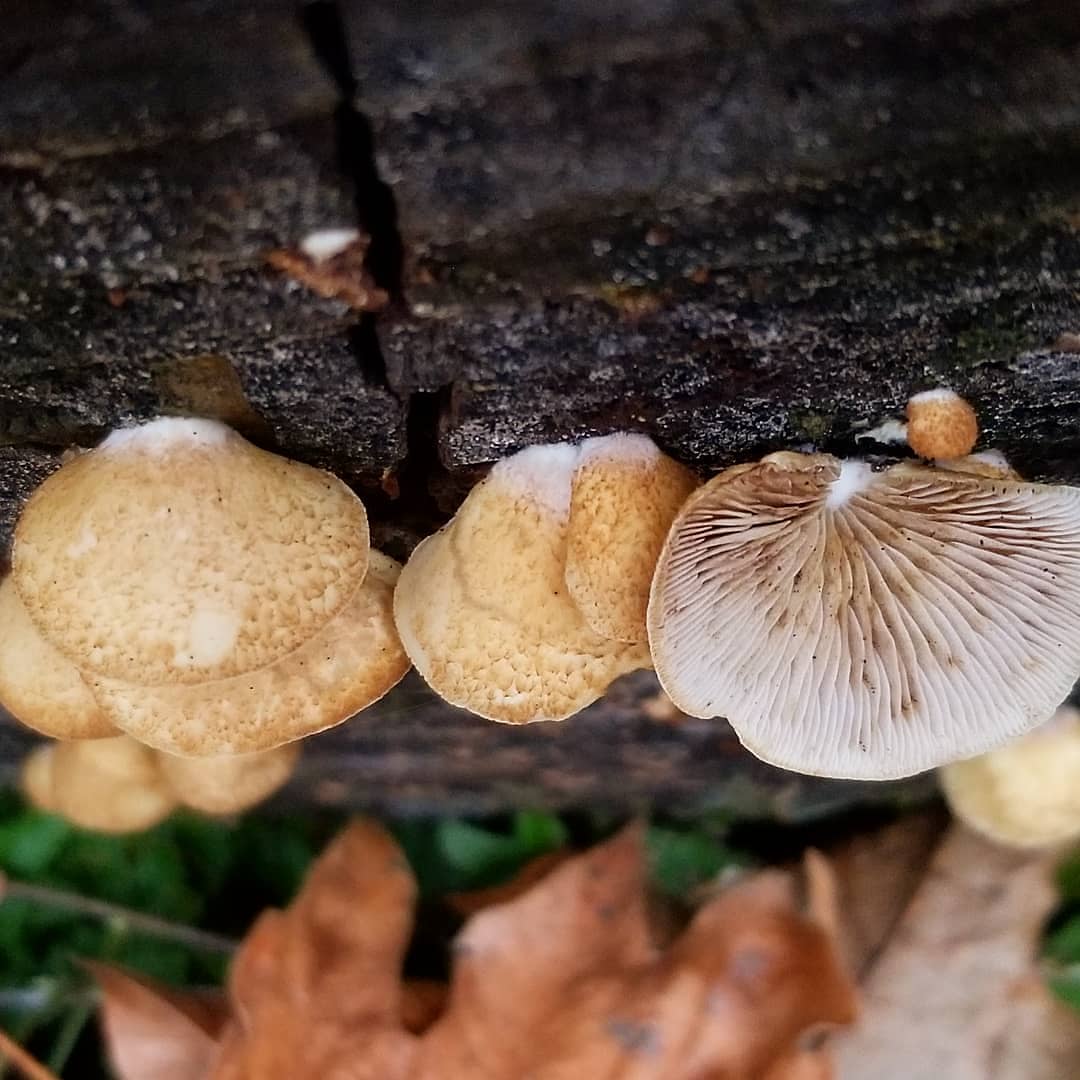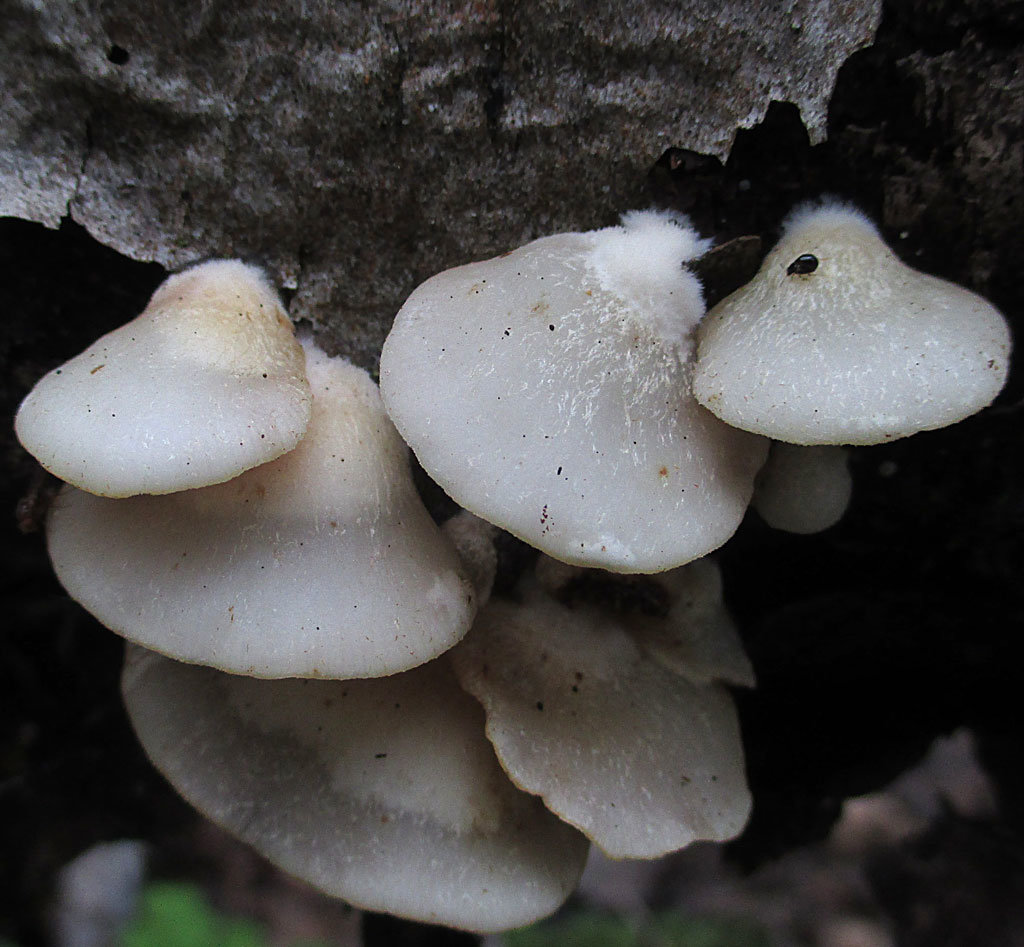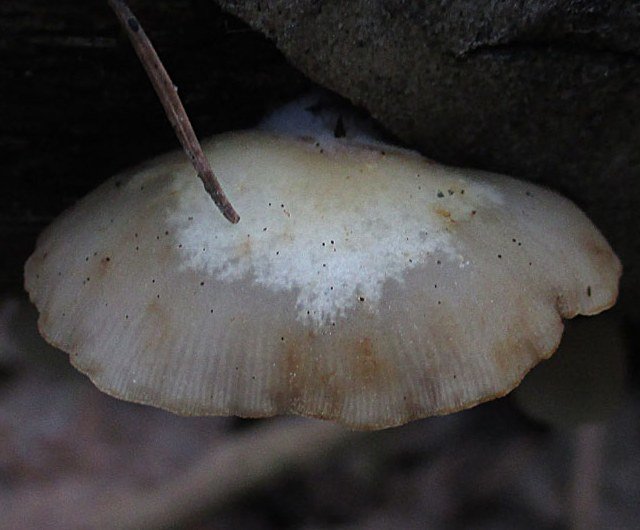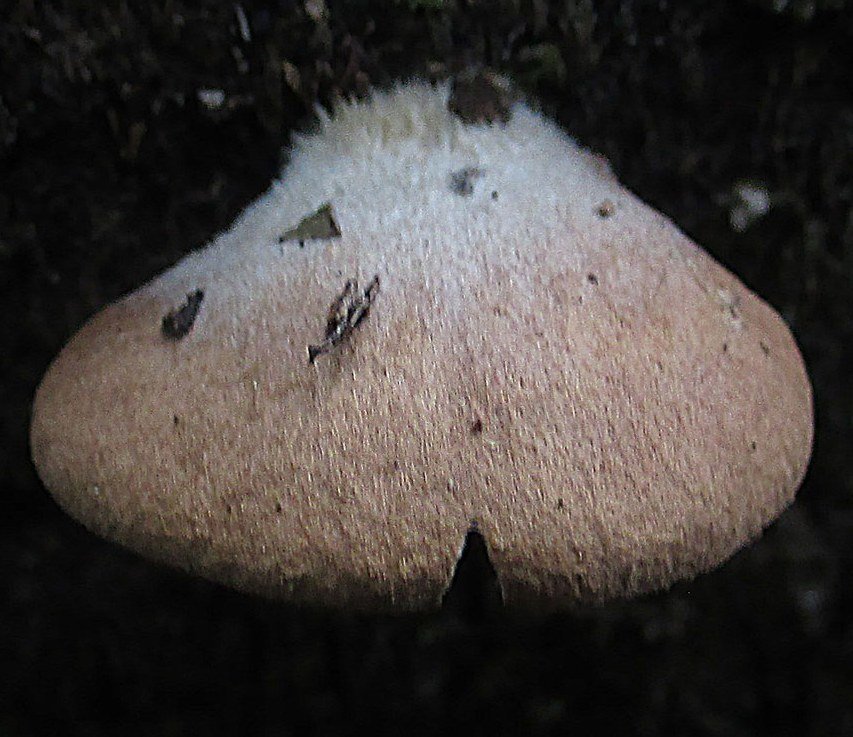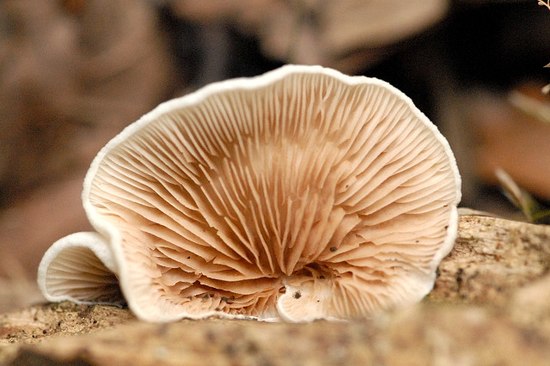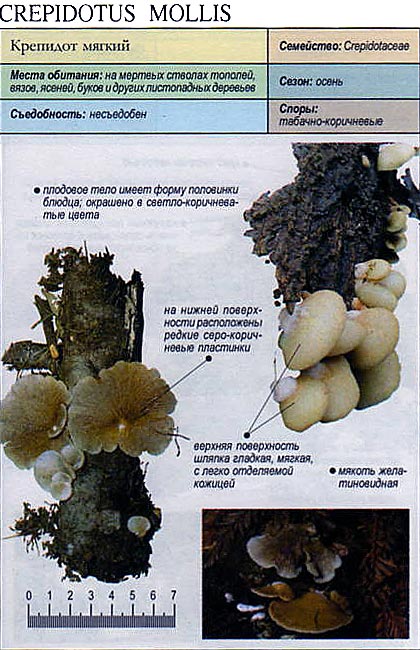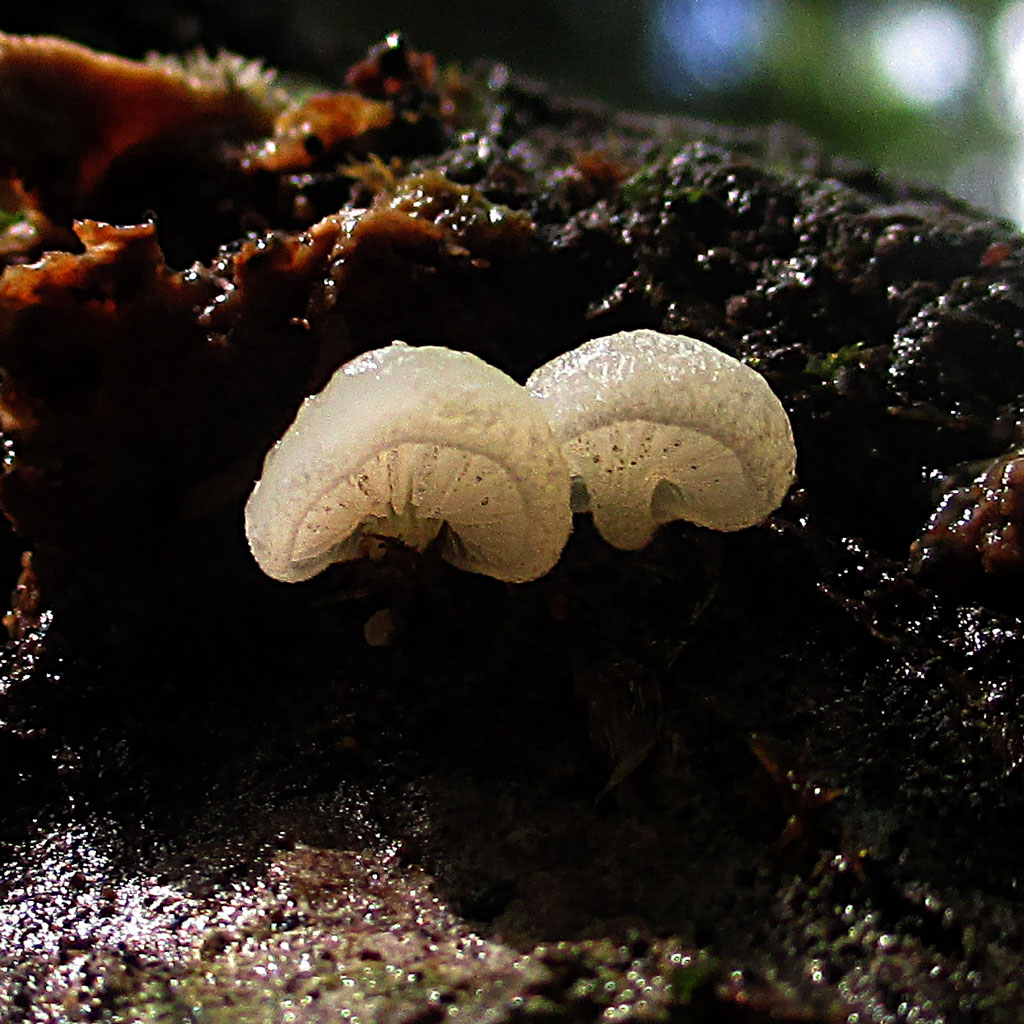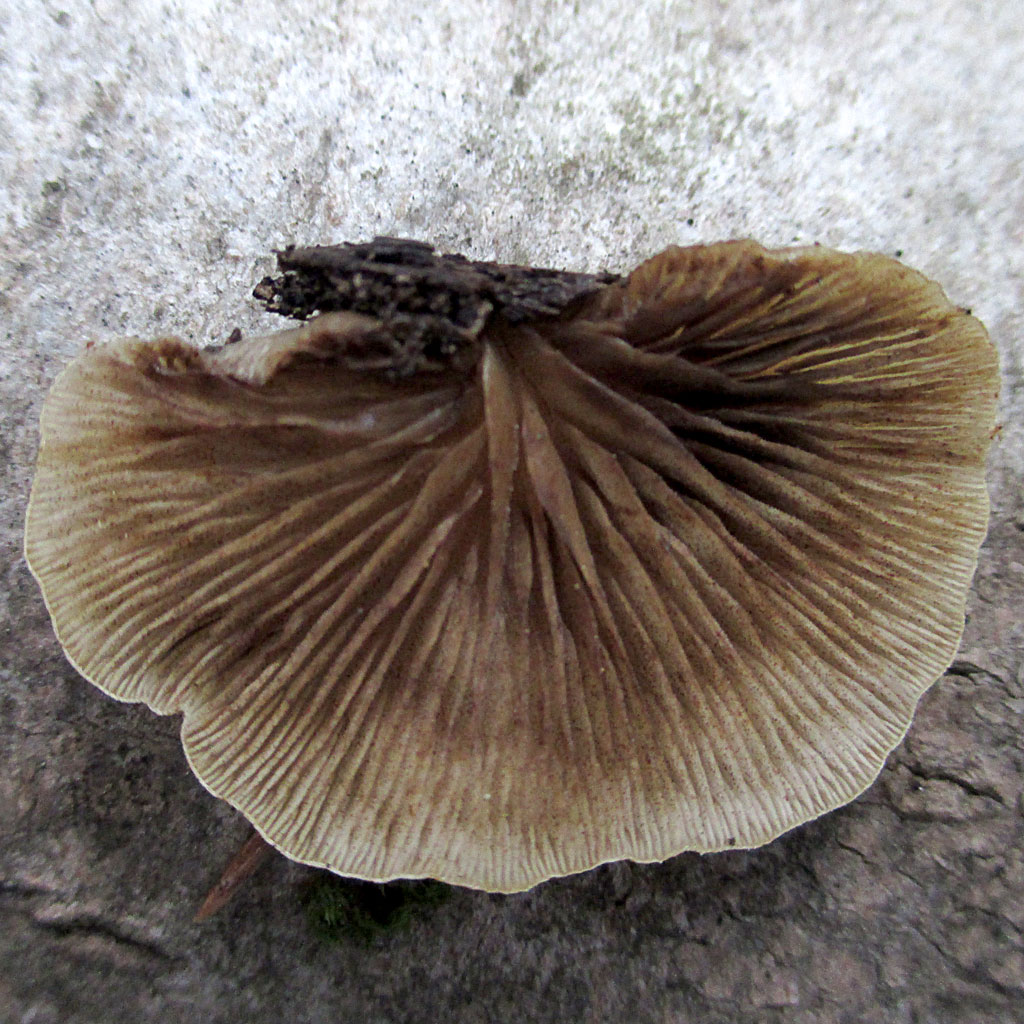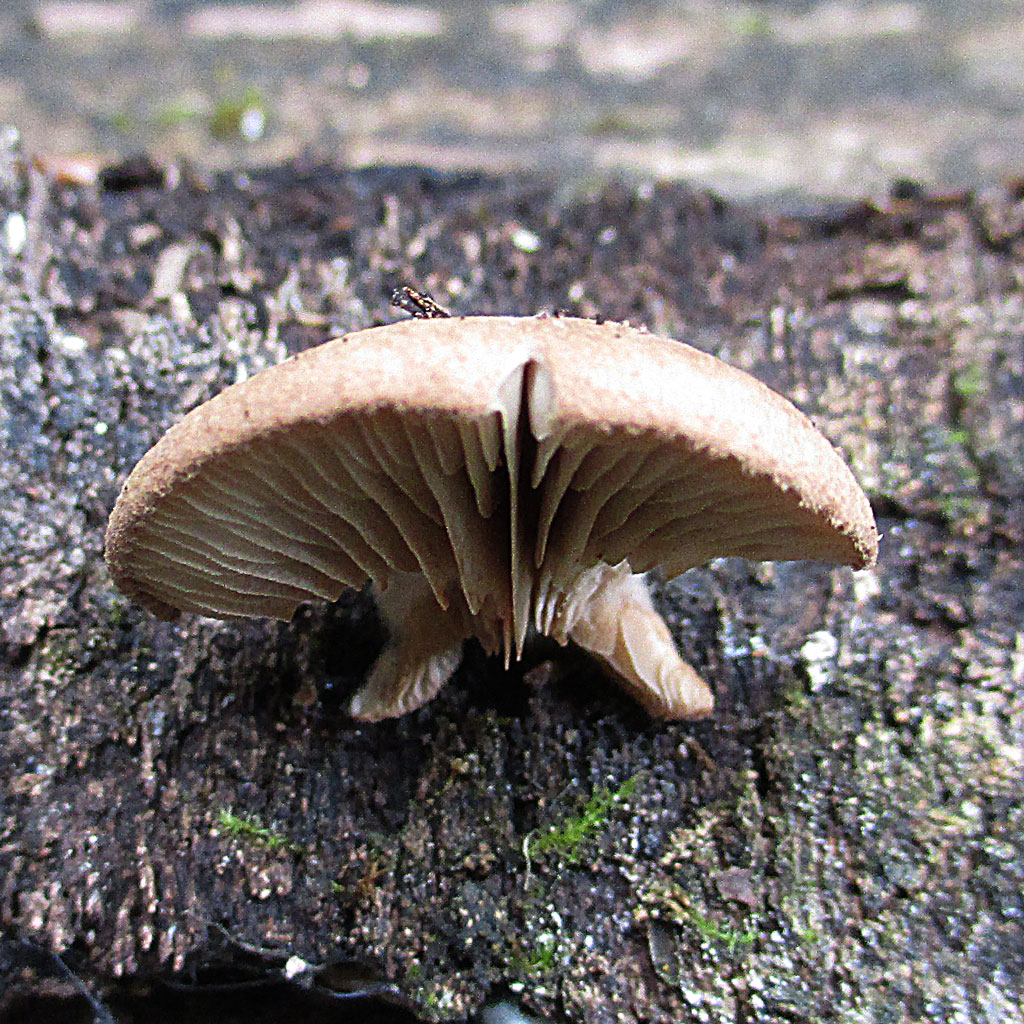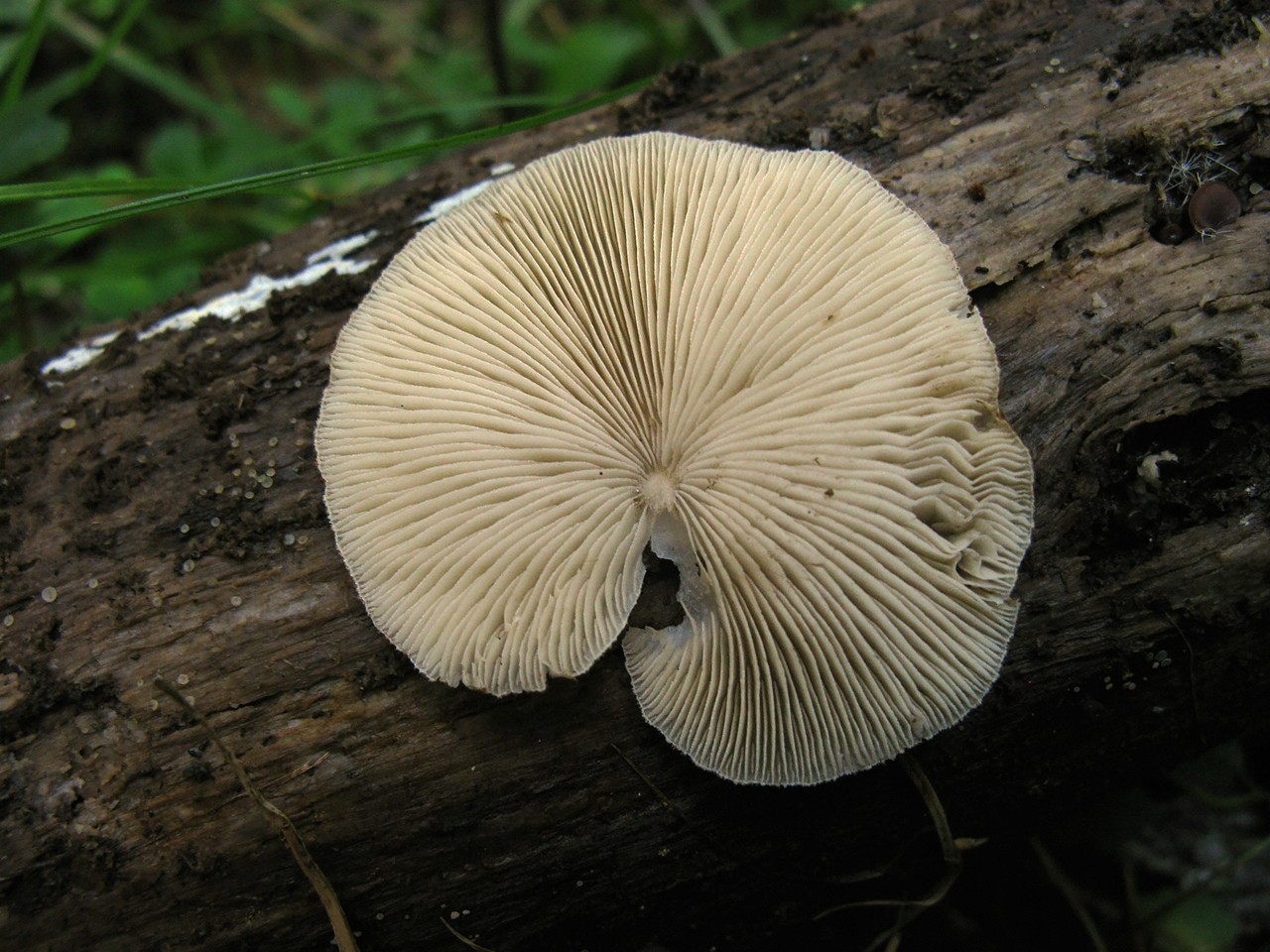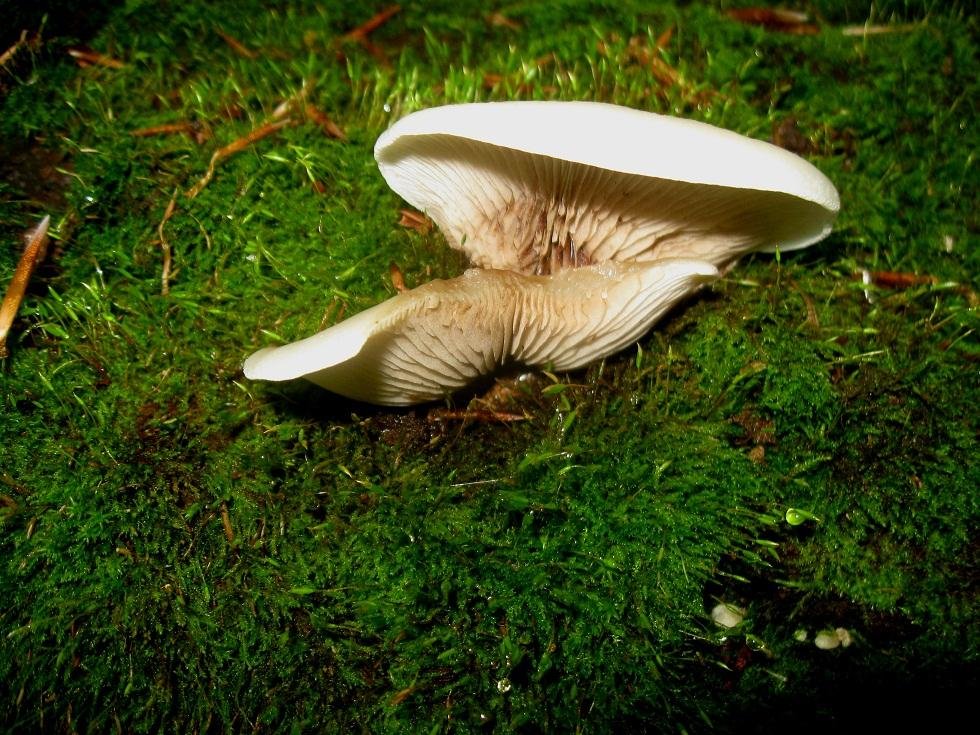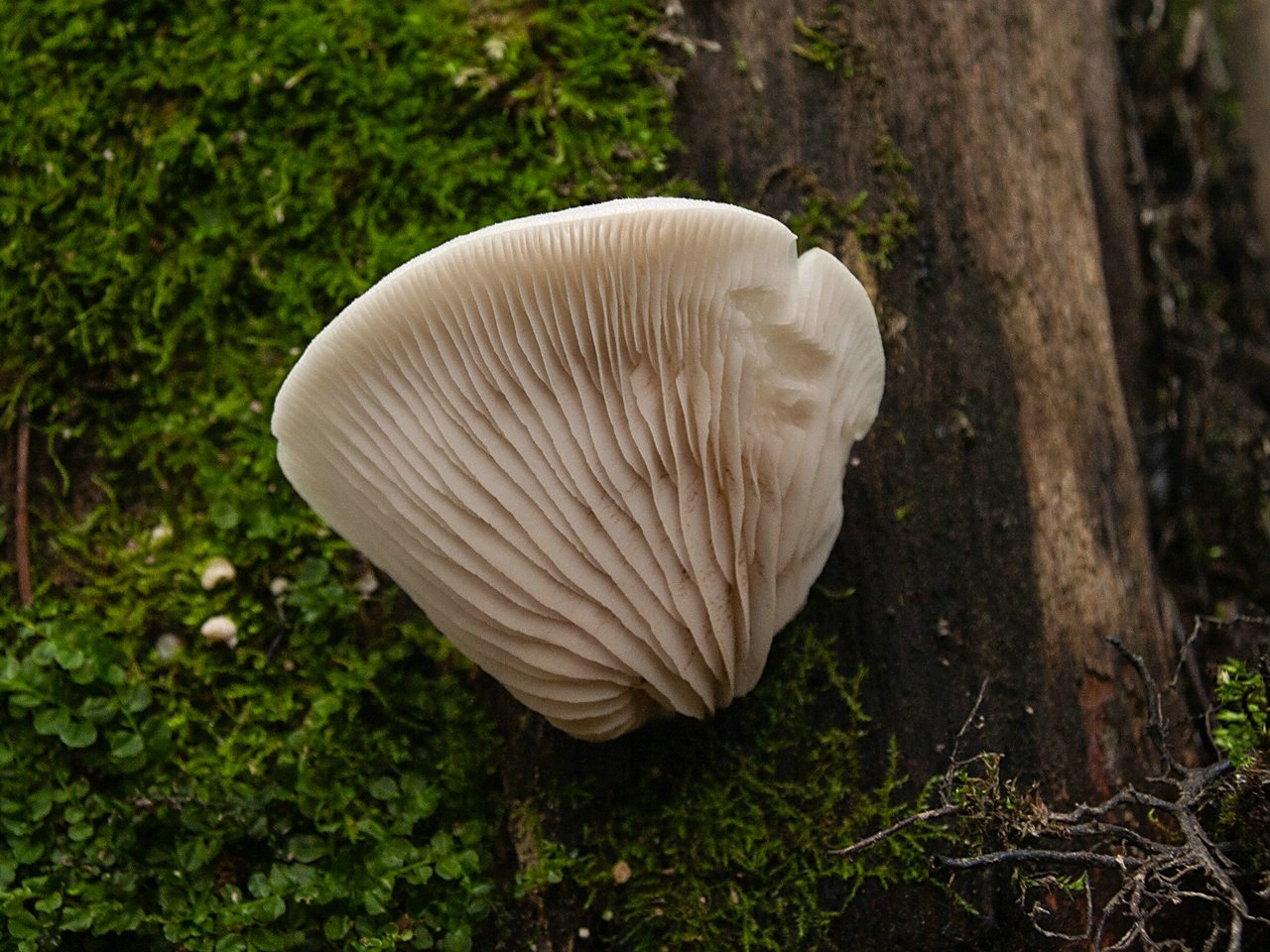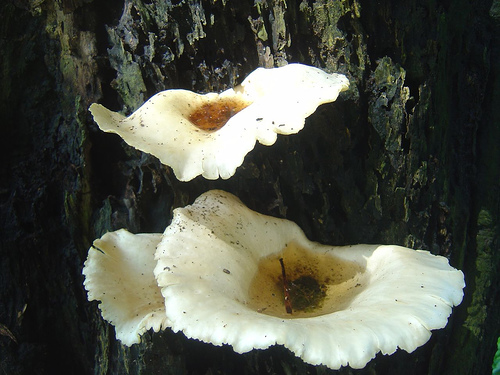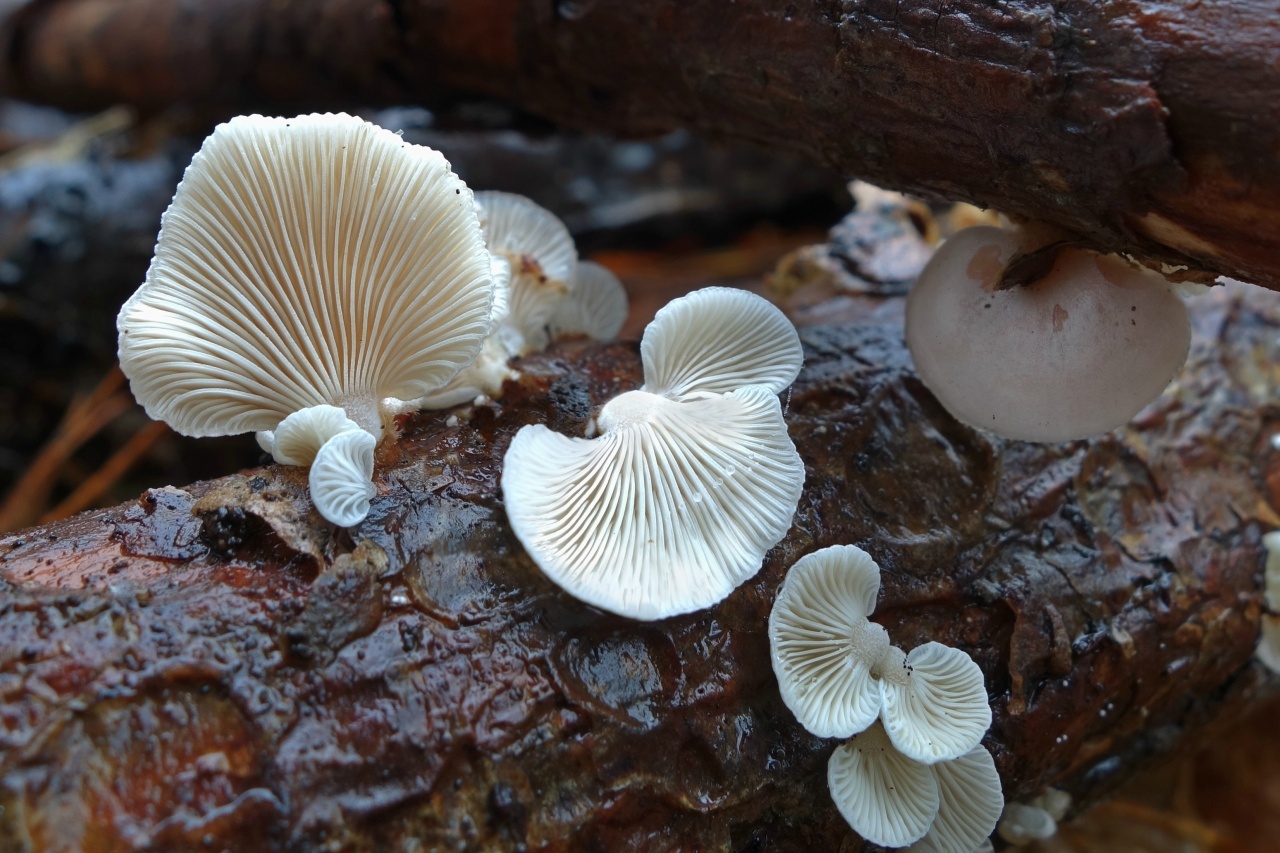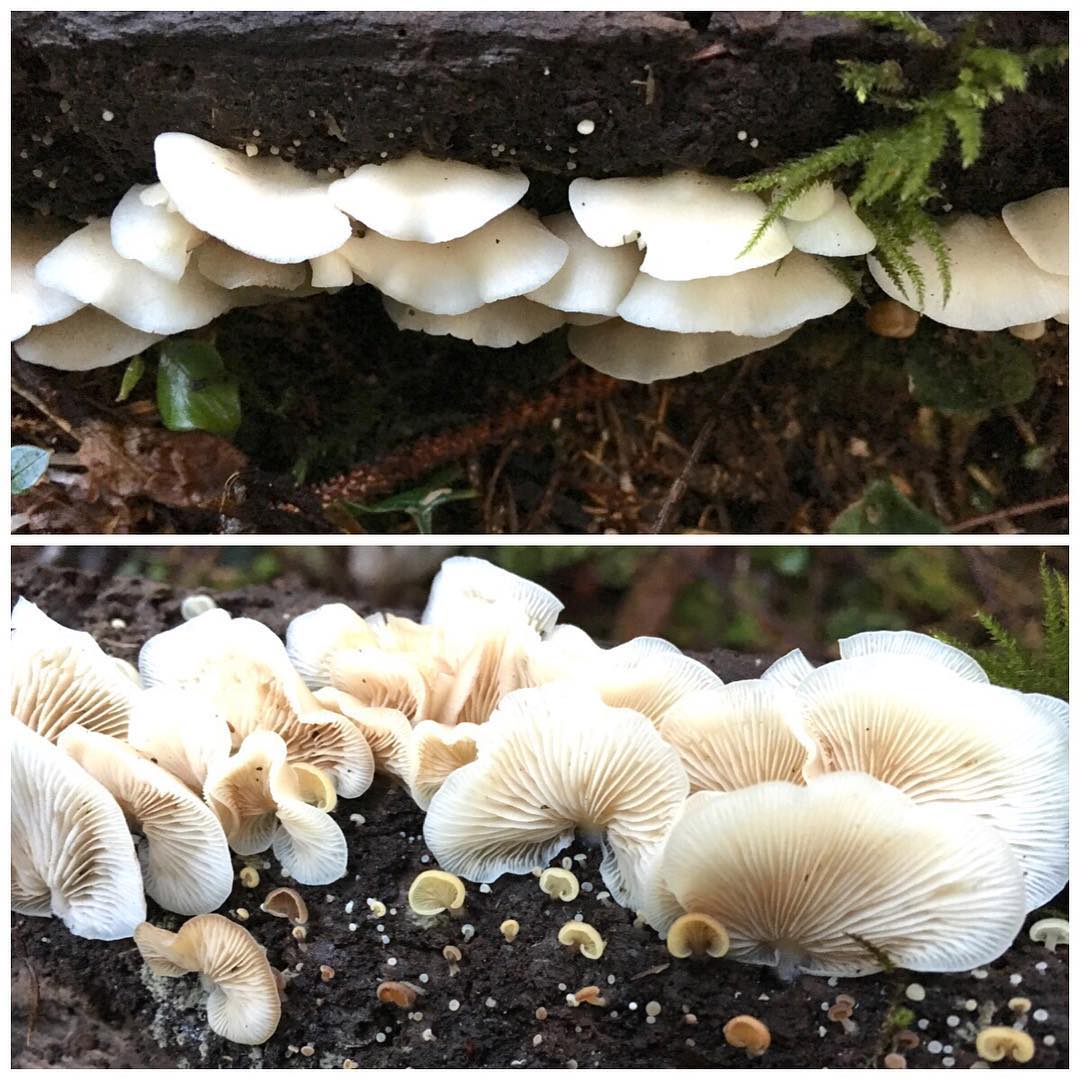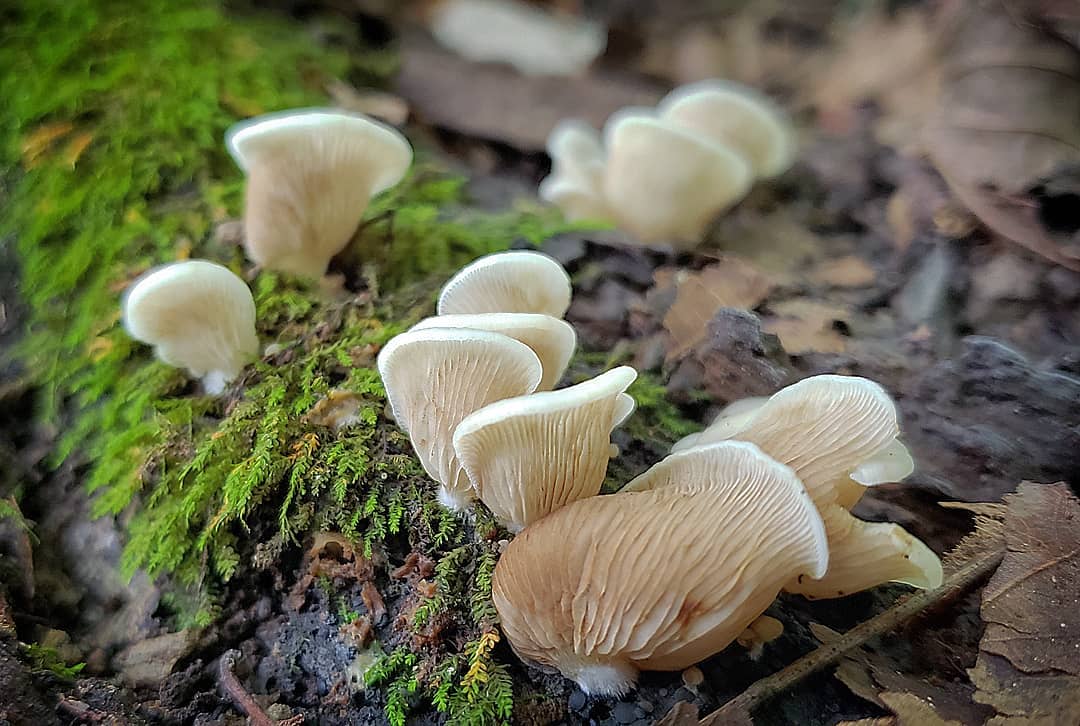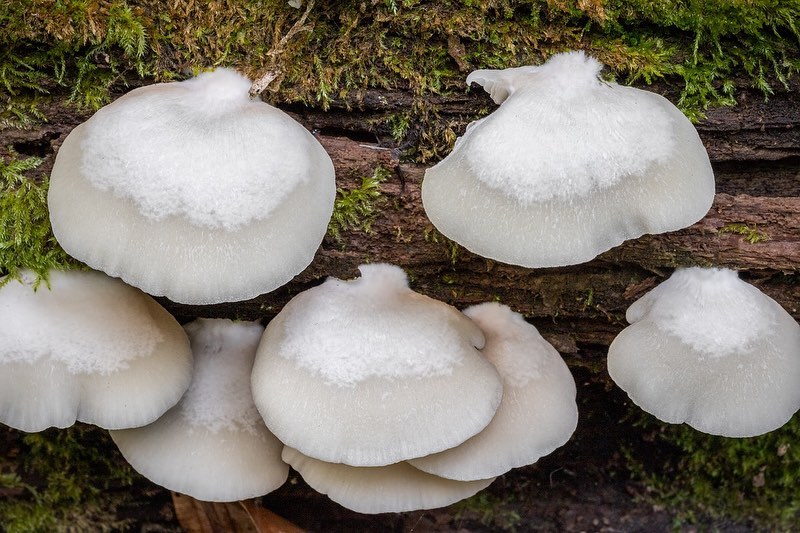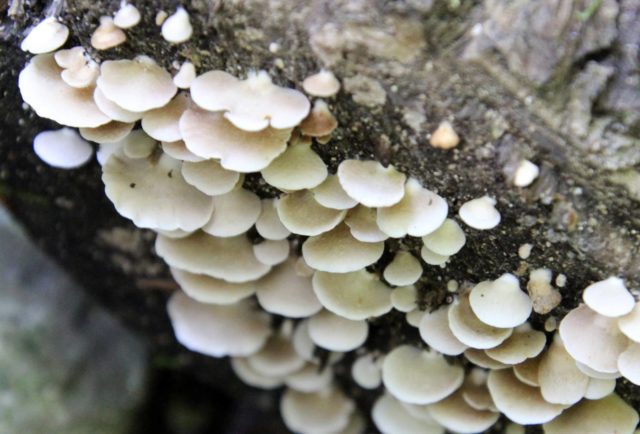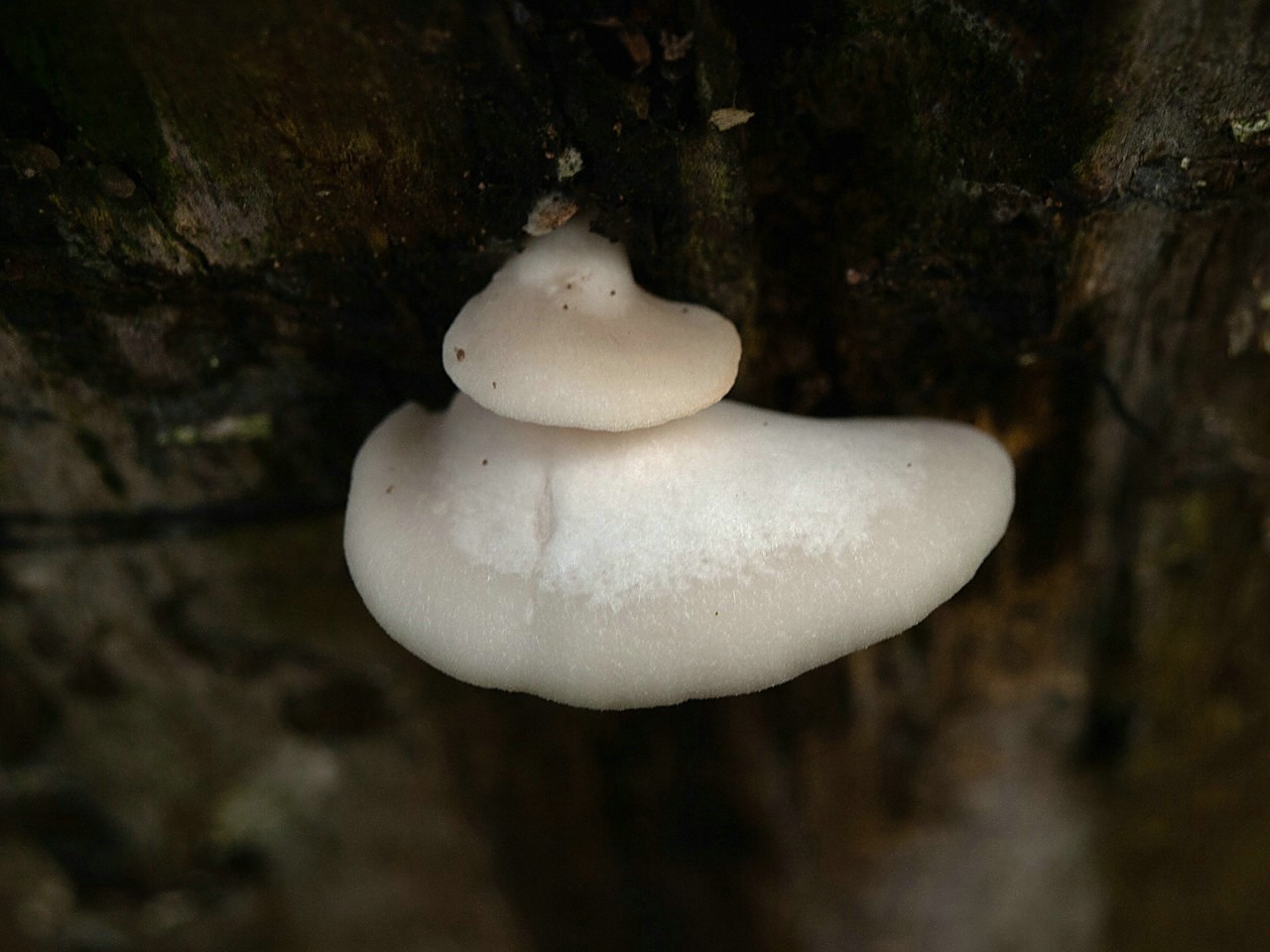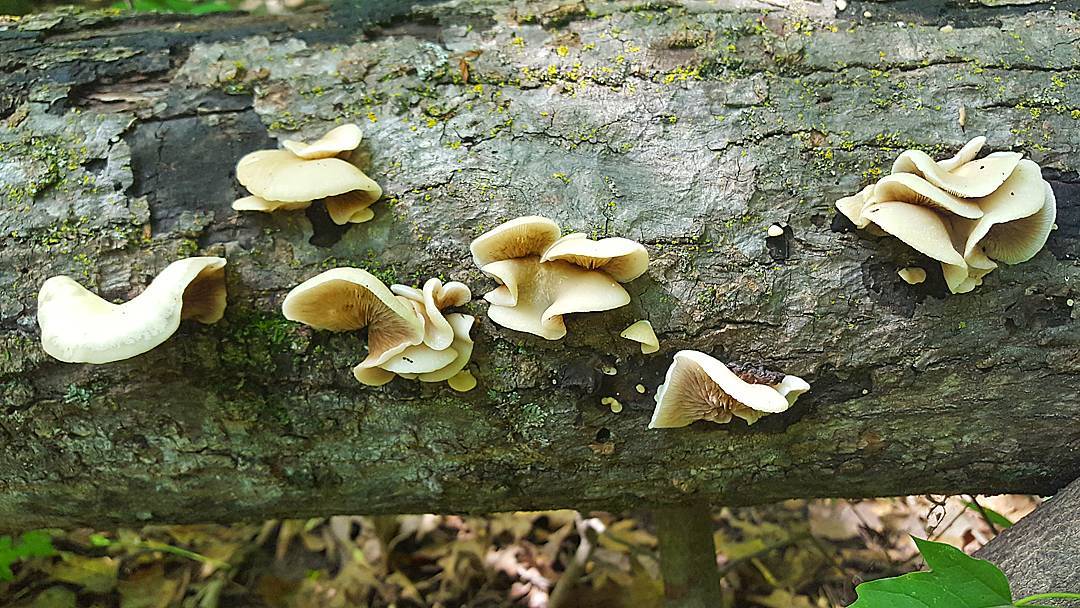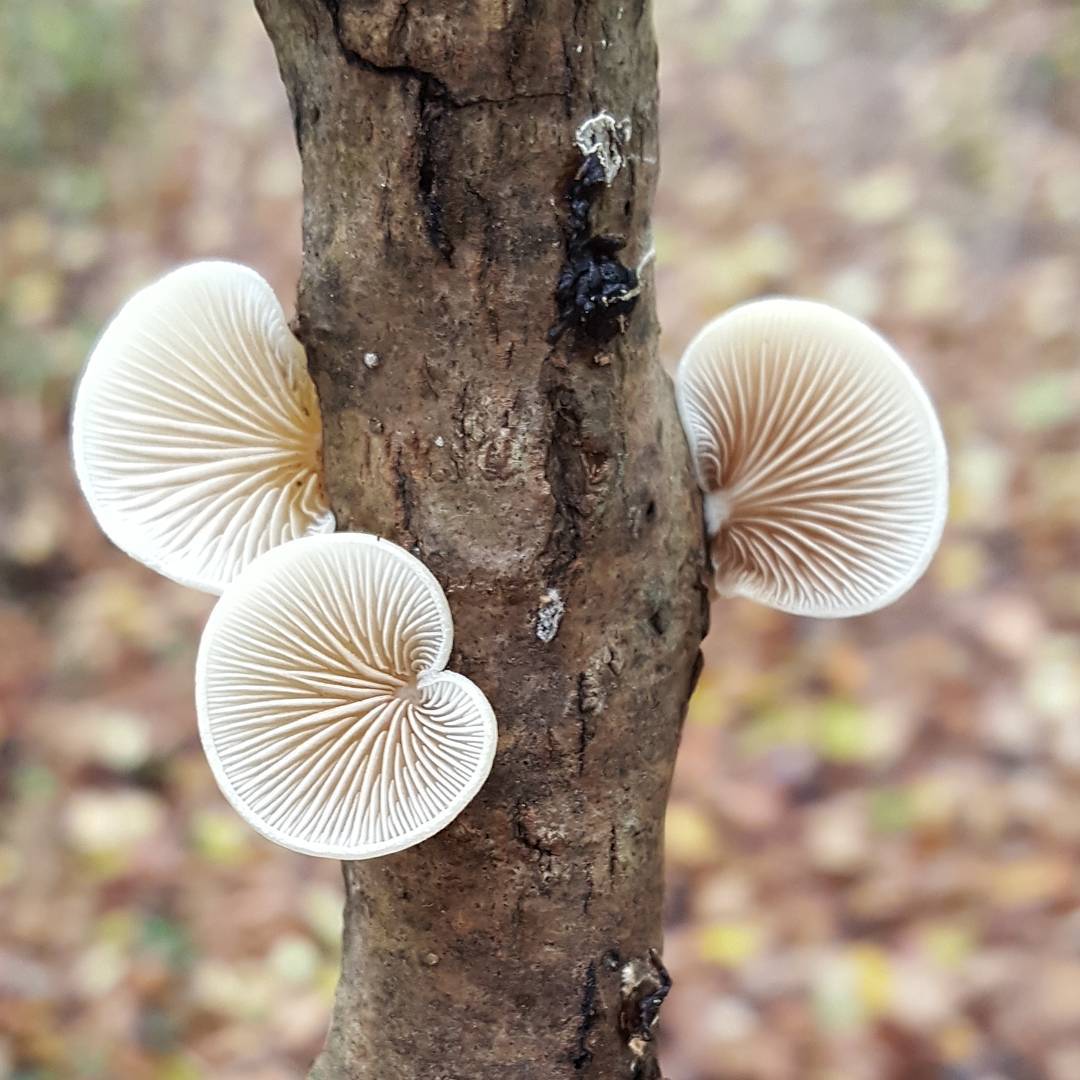Some species
- Crepidotus albescens (Murrill) Redhead 1984
- Crepidotus alveolus (Lasch) P. Kumm. 1871
- Crepidotus apodus Capelari 2006
- Crepidotus applanatus (Pers.) P. Kumm. 1871 - Flattened Crepidotus
- Crepidotus autochthonus J.E. Lange 1938
- Crepidotus boninensis (Hongo) E. Horak & Desjardin 2004
- Crepidotus brunswickianus Speg. 1887
- Crepidotus calolepis (Fr.) P. Karst. 1879 - Crepidotus beautiful scaly
- Crepidotus candidus Capelari 2006
- Crepidotus carpaticus Pilát 1929
- Crepidotus caspari Velen. 1926
- Crepidotus cesatii (Rabenh.) Sacc. 1877 - Crepidotus Caesatus
- Crepidotus cinnabarinus Peck 1895
- Crepidotus cristatus Senn-Irlet & Immerzeel 2003
- Crepidotus crocophyllus Berk. - Crepidotus saffron-lamellar
- Crepidotus epibryus (Fr.) Quél. 1888
- Crepidotus fulvifibrillosus Murrill 1917
- Crepidotus improvisus (E. Horak) T.W. May & A.E. Wood 1995
- Crepidotus longicomatus Har. Takah. 2003
- Crepidotus luteolus (Lambotte) Sacc. 1887 - Yellowish Crepidotus
- Crepidotus mollis (Schaeff.) Staude 1857 - Soft Crepidotus
- Crepidotus muscigenus Velen. 1947
- Crepidotus nanicus E. Horak 1978
- Crepidotus nephrodes (Berk. & M.A. Curtis) Sacc. 1887
- Crepidotus novae-zelandiae Pilát 1950
- Crepidotus nyssicola (Murrill) Singer 1973
- Crepidotus parietalis E. Horak 1978
- Crepidotus paxilloides Singer 1951
- Crepidotus pezizoides (Nees & T. Nees) P. Kumm. 1871
- Crepidotus rubrovinosus Bandala, Montoya & E. Horak 2006
- Crepidotus stenocystis Pouzar 2005
- Crepidotus subverrucisporus Pilát 1949 - Rough-spore Crepidotus
- Crepidotus thermophilus (Singer) Aime, Baroni & O.K. Mill. 2002
- Crepidotus variabilis (Pers.) P. Kumm. 1871 - Crepidotus mutable
- Crepidotus versutus (Peck) Sacc. 1887 - Crepidotus unfolding
- Crepidotus virgineus Har. Takah. 2003
Description
Fruiting bodies are annual, of the hymnocarp type of development, represent a cap attached to the substrate sideways or by the upper surface; rarely, there is a rudimentary vaguely expressed stalk.
The cap is convex, convex-prostrate or prostrate, in the circumference is shell-shaped or reniform, the edge is ribbed, sometimes lobed. The surface is white, yellowish, brownish or red-brown in color.
depart radially from the area of attachment to the substrate, frequent, rare in a few species, the edge of the plates is fringed, in young mushrooms it is flaky-pubescent. Anastomoses are usually absent, there are plates. The color of the plates is white, cream, ocher with a yellow or brown, sometimes reddish tint.
The flesh is thin, tender or fleshy, soft or brittle, white or light-colored, pleasant smell, pungent taste, more or less pronounced.
There are no remains of bedspreads.
The spore powder is brown or lilac. Spores are non-amyloid, cyanophilic or acyanophilic, brown, almost spherical to fusiform in shape, thin or thick walled, with a smooth or rough surface.
Cheilocystids are colorless, of various shapes - clavate, cylindrical, sinuous, ampoule-shaped, can be branched. Pileocystids are found in some species, clavate or ampulliform.
The hyphae system is monomytic; the hyphae are with or less often without buckles; the caps are often pigmented in the skin. The type of pileipellis is trichodermis or ixokutis. The tram of the plates is subregular, the mediostratum is formed by narrow, densely packed cylindrical hyphae, sometimes strongly agglutinated.
Changeable crepidot: description and photo
| Name: | Crepidotus changeable |
| Latin name: | Crepidotus variabilis |
| Type of: | Inedible |
| Specifications: |
|
| Systematics: |
|
Variable crepidotus (Crepidotus variabilis) is a small tree fungus from the Fiber family. Until the beginning of the 20th century, it had other names:
- Agaricus variabilis;
- Claudopus variabilis;
- Claudopus multiformis.
This oyster-shaped fruiting body belongs to the vast species of Crepidots.
What the volatile crepidots look like
These fruiting bodies belong to the Hat variety with a rudimentary or completely absent stem. Attached to the surface of the substrate with the side part or top, plates downwards.
The diameter of the fruiting body is from 0.3 to 3 cm, some specimens reach 4 cm. The shape is an irregular shell or lobe with edges curved in a wave. The cap is whitish-cream or yellowish delicate color, tomentose-pubescent, with a smooth edge, dry, thin, with weakly expressed fibers.
The plates are sparsely located, large, of various lengths, converging to the attachment point. The color is white, after which it darkens to grayish-brown, pinkish-sandy, lilac. There are no bedspreads.The spore powder is green-brown, pinkish, cylindrical in shape, with thin warty walls.
Where the volatile crepidots grow
The fungus belongs to saprophytes. It grows on decaying wood residues: stumps, trunks of fallen trees. Prefers hardwood. Often found in dead wood on thin twigs. It can also grow on a rotten branch or in rotten hollows of a living tree. Grows in large groups, close to each other, less often at a short distance.
The mycelium bears fruit throughout the warm season, from the moment the air warms up to an acceptable temperature, this is May-June, until the autumn frosts.
Is it possible to eat the volatile crepidota
The fruit body has a delicate pulp with a slightly sweetish taste and an unexpressed pleasant mushroom smell. It is not poisonous, no toxic substances were found in the composition. It is classified as an inedible mushroom due to its small size.
How to distinguish Crepidota mutable
The fruit body bears great resemblance to other members of its species. A characteristic feature of each species is the structure of the spores, which can only be distinguished under a microscope. It has no poisonous counterparts.
- Unfolding (versitus). Not poisonous. It is distinguished by a white color, an even shell-like shape with a brown junction.
- Flattened (applanatus). Non-toxic. Watery, moist, the edges of the cap are bent inward, fluffy fibers are located at the site of attachment to the substrate.
- Soft (mollis). It is distinguished by a smoother shape of a cap with scales, a brownish color, an edge at the junction and a very delicate pulp. Comment! Soft crepidote is classified as conditionally edible mushroom. Little known for mushroom pickers because of its small size.
- Cezata. Non-toxic, classified as inedible mushrooms. Differs in sparser and thicker plates, light edging and slightly wavy, slightly curled inward edge.
The volatile crepidote is also similar to the edible oyster mushroom or common. The latter is distinguished by a pronounced elongated attachment point to the substrate, an even rounded cap and larger sizes - from 5 to 20 cm.
Conclusion
Variable crepidote is a miniature tree fungus-saprophyte, found everywhere in Europe, on the territory of Russia and America. Loves shaded places, lives on the remains of representatives of the Notofagus family and other hardwoods. Less often it settles on coniferous wood or in dead woods. Due to its size and low nutritional value, it is classified as an inedible mushroom. No poisonous twins were found in the fruiting body.
Description
Fruiting bodies are annual, of the hymnocarp type of development, represent a cap attached to the substrate sideways or by the upper surface; rarely, there is a rudimentary vaguely expressed stalk.
The cap is convex, convex-prostrate or prostrate, in the circumference is shell-shaped or reniform, the edge is ribbed, sometimes lobed. The surface is white, yellowish, brownish or red-brown in color.
depart radially from the area of attachment to the substrate, frequent, rare in a few species, the edge of the plates is fringed, in young mushrooms it is flaky-pubescent. Anastomoses are usually absent, there are plates. The color of the plates is white, cream, ocher with a yellow or brown, sometimes reddish tint.
The flesh is thin, tender or fleshy, soft or brittle, white or light-colored, pleasant smell, pungent taste, more or less pronounced.
There are no remains of bedspreads.
The spore powder is brown or lilac. Spores are non-amyloid, cyanophilic or acyanophilic, brown, almost spherical to fusiform in shape, thin or thick walled, with a smooth or rough surface.
Cheilocystids are colorless, of various shapes - clavate, cylindrical, sinuous, ampoule-shaped, can be branched. Pileocystids are found in some species, clavate or ampulliform.
The hyphae system is monomytic; the hyphae are with or less often without buckles; the caps are often pigmented in the skin. The type of pileipellis is trichodermis or ixokutis. The tram of the plates is subregular, the mediostratum is formed by narrow, densely packed cylindrical hyphae, sometimes strongly agglutinated.
Some species
- Crepidotus albescens (Murrill) Redhead 1984
- Crepidotus alveolus (Lasch) P. Kumm. 1871
- Crepidotus apodus Capelari 2006
- Crepidotus applanatus (Pers.) P. Kumm. 1871 - Flattened Crepidotus
- Crepidotus autochthonus J.E. Lange 1938
- Crepidotus boninensis (Hongo) E. Horak & Desjardin 2004
- Crepidotus brunswickianus Speg. 1887
- Crepidotus calolepis (Fr.) P. Karst. 1879 - Crepidotus beautiful scaly
- Crepidotus candidus Capelari 2006
- Crepidotus carpaticus Pilát 1929
- Crepidotus caspari Velen. 1926
- Crepidotus cesatii (Rabenh.) Sacc. 1877 - Crepidotus Caesatus
- Crepidotus cinnabarinus Peck 1895
- Crepidotus cristatus Senn-Irlet & Immerzeel 2003
- Crepidotus crocophyllus Berk. - Crepidotus saffron-lamellar
- Crepidotus epibryus (Fr.) Quél. 1888
- Crepidotus fulvifibrillosus Murrill 1917
- Crepidotus improvisus (E. Horak) T.W. May & A.E. Wood 1995
- Crepidotus longicomatus Har. Takah. 2003
- Crepidotus luteolus (Lambotte) Sacc. 1887 - Yellowish Crepidotus
- Crepidotus mollis (Schaeff.) Staude 1857 - Soft Crepidotus
- Crepidotus muscigenus Velen. 1947
- Crepidotus nanicus E. Horak 1978
- Crepidotus nephrodes (Berk. & M.A. Curtis) Sacc. 1887
- Crepidotus novae-zelandiae Pilát 1950
- Crepidotus nyssicola (Murrill) Singer 1973
- Crepidotus parietalis E. Horak 1978
- Crepidotus paxilloides Singer 1951
- Crepidotus pezizoides (Nees & T. Nees) P. Kumm. 1871
- Crepidotus rubrovinosus Bandala, Montoya & E. Horak 2006
- Crepidotus stenocystis Pouzar 2005
- Crepidotus subverrucisporus Pilát 1949 - Rough-spore Crepidotus
- Crepidotus thermophilus (Singer) Aime, Baroni & O.K. Mill. 2002
- Crepidotus variabilis (Pers.) P. Kumm. 1871 - Crepidotus mutable
- Crepidotus versutus (Peck) Sacc. 1887 - Crepidotus unfolding
- Crepidotus virgineus Har. Takah. 2003

